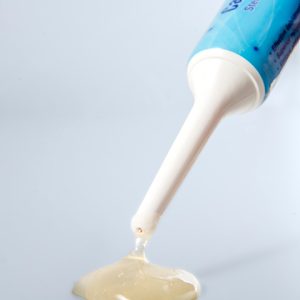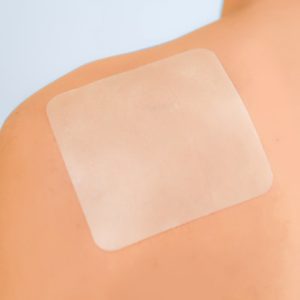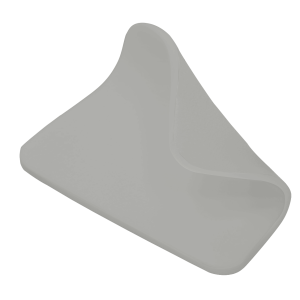Description
Product Info
ESPUMA® Gentle Transfer is composed of thin polyurethane foam layer, but without polyurethane top sheet, so that the dressing can transfer exudates away from the wound into a secondary absorbent dressing.
- The wound contact layer is perforated soft silicone gel that allows painless and atraumatic removal and permits the passage of exudate to the absorbent foam layer.
- Comfortable: as the dressing is easy to remove and minimize trauma during dressing changes.
- Cushioning effect: as it acts as a barrier against irritation and constant pressure on the skin.
- Breathable: the semi-permeable backing allows moisture to escape.
- Prevents skin maceration: as the perforated silicone film allows free passage of wound exudate to the foam.
- High capacity of autolytic debridement and it is particularly useful in preventing dressing-related trauma especially in people with fragile skin.
- It’s indicated for a wide range of exuding wounds as: pressure ulcers, leg ulcers, diabetic foot ulcers, skin graft, first and second degree burns.
- Can be used in combination with compression therapy.
- The dressing should not be used with oxidizing agents such as hypochlorite solution or
hydrogen peroxide, as these agents can break down the absorbent polyurethane component of the dressing. - The dressing should not be used on patients with a known sensitivity to silicone or polyurethane.
The interval between dressing changes will normally be determined by the degree of exudate produced but the dressing may be left undisturbed for several days on clean lightly exuding wounds.
Soft silicone dressings
are coated with a hydrophobic soft silicone layer that is tacky to touch. These dressings do not stick to the moist wound bed, but will adhere gently to the surrounding skin. They are designed to minimize trauma on removal and do not leave an adhesive residue on the skin.
Foam dressings
are made from a polyurethane base and are permeable to both gases and water vapor. Their hydrophilic properties allow high absorptive properties while they also provide thermal insulation.
3 Years
1. Cleanse the wound in accordance with local clinical protocols.
2. Select an appropriate dressing size that overlaps the wound margin by at least two centimeters.
3. Remove the sterile dressing from the package using aseptic technique.
For variants with no adhesive border:
1. Variants with no adhesive border can be cut to fit awkward areas. When used under compression therapy, the
dressing must be cut to the size of the wound.
2. Remove the release liner and then place the dressing on the wound site.
3. Secondary film dressing or conforming bandage should be used to secure the dressing in place.
4. To remove the dressing, gently lift the corners of the dressing away from the wound.
5. For ESPUMA® Gentle Transfer, secure with a secondary absorptive dressing.
Espuma® Gentle Transfer | Size | Pieces/Case | Boxes/Case |
ESPGT7575 | 75×75 mm | 10 | 48 |
ESPGT75100 | 75×100 mm | 10 | 48 |
ESPGT100100 | 100×100 mm | 10 | 48 |
ESPGT150150 | 100×150 mm | 5 | 24 |
ESPGT100200 | 100×200 mm | 5 | 24 |
ESPGT100250 | 100×250 mm | 5 | 24 |
Other sizes are available upon request






Reviews
There are no reviews yet.